Business Conditions Monthly November 2023

In November 2023, the AIER Business Conditions Monthly indices spiked up in all categories after the dip in October, highlighting the irregular character of economic data in the post-pandemic period. At 67, the Leading Indicator returned to levels not seen since the spring and early summer of 2023. Both the Roughly Coincident and Lagging Indicators did the same, rising to 75 and 67 respectively from the 50 level in October.
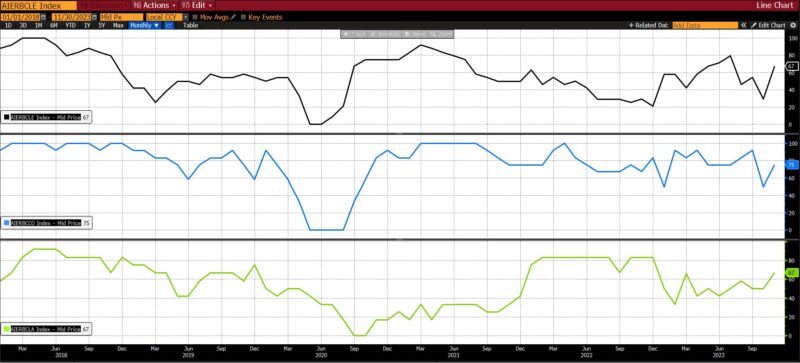
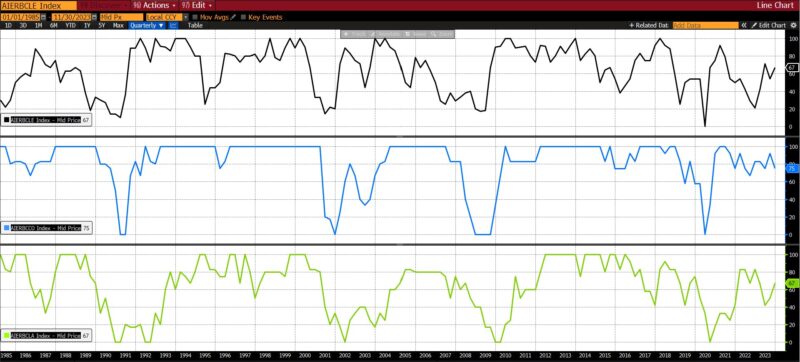
Leading Indicators (67)
From October to November 2023, eight of the twelve leading indicators rose while four declined.
Rising were the US New Privately Owned Housing Units Started by Structure (14.8 percent), United States Heavy Trucks Sales (6.0 percent), Conference Board US Leading Index of Stock Prices (4.7 percent), FINRA’s Debt Balances in Customers’ Securities Margin Accounts (4.0 percent), Inventory/Sales Ratio: Total Business (0.7 percent), Conference Board US Manufacturers New Orders Nondefense Capital Good Ex Aircraft index (0.5 percent), Adjusted Retail and Food Services Sales (0.3 percent), Conference Board US Leading Index Manufacturing, New Orders, Consumer Goods, and Materials (0.2 percent).
The US Average Weekly Hours All Employees Manufacturing declined (-0.3 percent), as did the University of Michigan Consumer Expectations Index (-4.2 percent), US Initial Jobless Claims (-4.5 percent), and the 1-to-10 year US Treasury spread (-50.4 percent).
The jump in the Leading Indicator from 29 in October 2023 to 67 in November 2023 is the second largest since September 2020. Since January 2020, three of the five largest monthly positive changes in the Leading Indicator took place in 2023 (November, January, and April), underscoring the erratic and unpredictable nature of economic statistics in the post-pandemic period.
Roughly Coincident (75) and Lagging Indicators (67)
Within the Roughly Coincident Indicator, there were four rising metrics, one unchanged, and one declining. Coincident Personal Income Less Transfer Payments and US Industrial Production rose by 0.3 percent each, with the Conference Board’s Coincident Manufacturing and Trade Sales rising by 0.2 percent and total US Employees on Nonfarm Payrolls rising by 0.1 percent. The US Labor Force Participation rate in November 2023 was unchanged, and the Conference Board Consumer Confidence Present Situation fell 1.5 percent.
Three components rose, two were unchanged, and one declined in the lagging category. The Conference Board US Lagging Average Duration of Unemployment increased by 10.2 percent from October to November 2023, as did average 30-day yields (0.6 percent), and Conference Board US Lagging Commercial and Industrial Loans (0.3 percent). Both the year-over-year US CPI Urban Consumers Less Food & Energy and Census Bureau’s Private Construction Spending (Nonresidential) were unchanged, with US Manufacturing and Trade Inventories Totals falling -0.1 percent.
Substantial reversals in both the Roughly Coincident and Lagging Indicators from October to November were, as in the case of the Leading Indicator, among the largest since January 2020. The surge in the Roughly Coincident Indicator from 50 in October to 75 in November is the sixth largest, while the move from 50 to 67 over the same period in the Lagging Indicator is the fifth largest such jump.
Discussion
On January 5th, 2024, the Bureau of Labor Statistics (BLS) released its employment report for December 2023, providing a nuanced view of the current state of employment in the United States. The headline number, showing an increase of 216,000 in nonfarm payrolls, surpassed the expected 175,000, leading many to believe that the long-discussed soft landing in the economy was taking shape. Beneath this headline, however, less-discussed aspects of the report revealed signs of a rapidly deteriorating labor market.
The household employment data showed its most significant drop since April 2020, with a loss of 683,000 jobs (compared to a gain of 586,000 in November). Although the U-3 unemployment rate remained unchanged at 3.7 percent from November 2023, this stability was largely due to a decline of 676,000 individuals from the workforce. Other concerning indicators included an increase in the average duration of unemployment and a drop in the labor force participation rate, which fell from 62.8 to 62.5 percent and nevertheless remains several percentage points below pre-pandemic levels.
Further analysis of the report revealed a rise in the number of workers taking on part-time employment for economic reasons, and a record-high of 8.69 million Americans holding multiple jobs. It’s worth noting that the actual number of individuals with multiple jobs may be even higher, as secondary employment often occurs off the books.
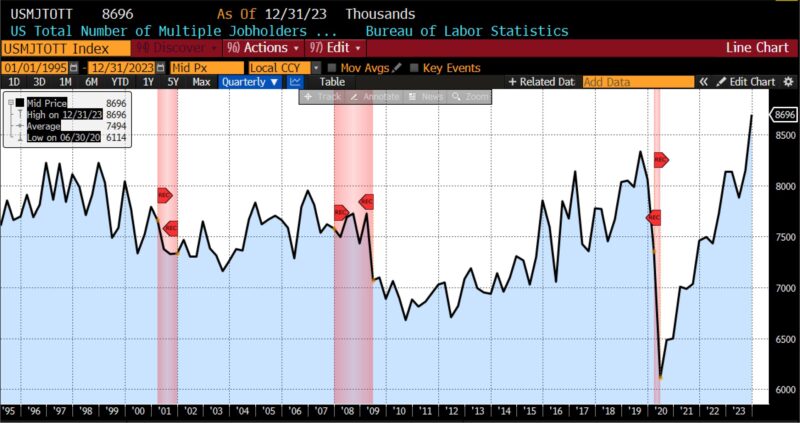
Another concerning aspect of the December report involves the nature of current and recent job growth, most of which has taken place in activities closely tied to government spending, sectors which, with an aging US population are important and valuable, but not necessarily economically productive. Healthcare, social assistance, government jobs, and construction saw substantial growth. Leisure, hospitality, and the retail sector additionally experienced job gains, likely relating to the holiday season. In contrast, industries primarily composed of private, for-profit firms have seen the most significant declines in employment, including manufacturing, transportation, and warehousing, which reported job losses. Professional services, wholesale, and financial activities are reporting notably slower employment growth. Elsewhere within the report the U-6 underemployment number ticked up from 7.0 to 7.1 percent in December 2023. If nothing else, the markedly different picture of the US labor market revealed by the less-reviewed portions of the report emphasizes the need to investigate beyond the headline numbers.
The Institute for Supply Management (ISM) Services report for December reinforces the perspective which looking below the surface of the December 2023 BLS report does. While business conditions remained relatively stable, there was a notable deceleration in services activity, which was more pronounced than anticipated. This slowdown was driven by a decline in both new orders and employment levels. Notably, the employment component of the index fell significantly into contractionary territory, with some respondents citing increased layoffs amid economic uncertainty leading to decreasing customer demand. Furthermore, the decline in new orders and inventory levels suggests that private firms are proactively reducing excess inventory in anticipation of falling demand. Although order backlogs showed slight improvement, it remained in contractionary territory, reflecting firms’ efforts to consume backlogs more rapidly.
In March 2023 we called for a recession within 18 months (by September 2024). Over the last two months, owing to initially strong (but consistently revised downward) nonfarm payroll numbers, progress in disinflation, and an uncharacteristically strong US stock market performance during the final two months of 2023, broad sentiment has shifted away from expectations of a recession and toward that of a soft landing.
While disinflationary progress is indeed positive, stock market returns tend to reflect forward-looking expectations. They are additionally susceptible to the dynamics of institutional liquidity and the cyclical rotation into and out of asset classes at the end of the year. While equities play a crucial role in financial markets, discounted earnings from the stock market do not always serve as dependable macroeconomic indicators.
On the other hand, robust economic conditions are strongly characterized by broad-based job growth, in particular employment in sectors that tend to hire more early in and during economic expansions but cut back during downturns. Recent data suggest that the US labor market is presently not robust in this regard. In November 2023, the three-month average of nonfarm payroll gains stood at 204,000 jobs, with — as previously stated — a significant portion of hires concentrated in just two sectors: healthcare, and leisure and hospitality. Healthcare consistently requires a workforce, regardless of the overall economic conditions, while the leisure and hospitality sector historically manages its headcount through attrition rather than layoffs due to comparatively high worker turnover. If workers are staying in their jobs for longer periods, as indicated by the declining quit rate in November’s JOLTS report, it’s possible that we may observe stagnant or even negative employment changes in the leisure and hospitality sector in the upcoming months. If jobless claims continue to rise in upcoming weeks, and notably if they surpass the usual seasonal layoffs, concerns will heighten regarding a notable decline in labor demand.
Current continuing claims data indicates a 15 percent year-over-year increase in the four-week moving average (1.88 million). In summary, unemployed individuals are taking longer to find jobs amid a small number of sectors (most of which are characterized by their proximity to government spending) accounting for increased employment in a shrinking labor pool. Placed in a historical context, excluding the COVID-19 downturn, the past five recessions began with initial claims averaging 388,000 and continuing claims averaging 2.63 million. Current initial claims are far from those levels, but as mentioned in the previous (October 2023) Business Conditions Monthly report,
[O]n the eve of … recessions, predictions of soft landings dominate discourse … The distribution of unemployment rates is highly bimodal, meaning not normally distributed, and with a long right tail. In short, we see a large cluster of unemployment in the 4 to 5 percent range, with a small but appreciable cluster of employment at the 7 percent and higher range. Forecasting models which rely on normal distributions, as many likely do, will thus consistently and predictably understate those worse outcomes represented by the long, fat right tail of the distribution.
In other words, the unemployment rate typically experiences a significant uptick during economic recessions, accelerating nonlinearly. While a substantial portion of unemployment outcomes over time center around the historical norm of 5 percent during prosperous periods, another noteworthy cluster emerges around an unemployment rate of 7 percent. This distribution reveals that any forecasting model relying solely on a mean estimate would underestimate the risk of more severe outcomes due to the presence of a long and heavily skewed right tail.
The prevailing rationale behind forecasts of a soft landing in historical economic downturns and, likely, in the current context (given the recent deterioration in labor market indicators) are thus reflected in the December report. Economic recessions are characterized by nonlinear dynamics, which pose a challenge to traditional forecasting approaches. It is additionally essential to acknowledge the influence of high degrees of political polarization serving both predictions of a soft landing and unwarrantedly upbeat descriptions of the current economic landscape.
From the ISM report, businesses are beginning to take action consistent with expectation of falling demand. In light of this and the increased vulnerability of the US economy to geopolitical shocks — with conflict spreading in the Middle East in addition to southwestern Europe — our prediction of a US recession by September 2024 stands.
LEADING INDICATORS
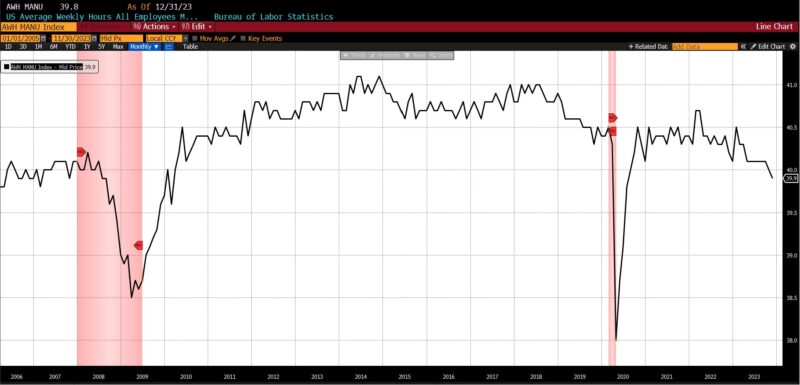
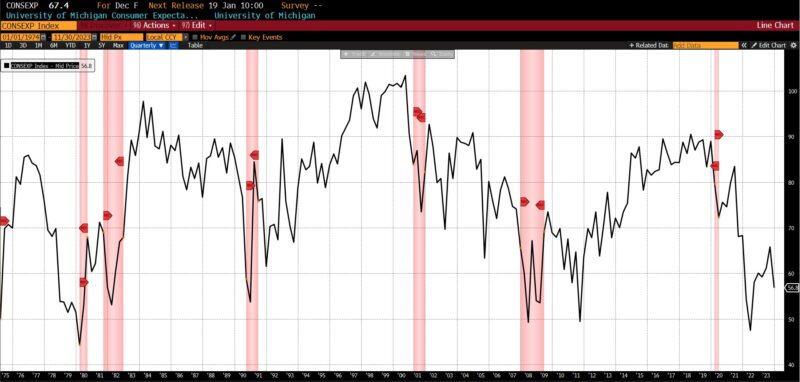
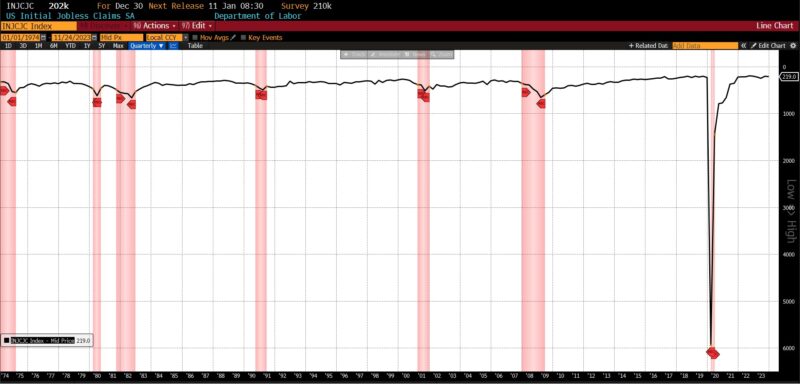
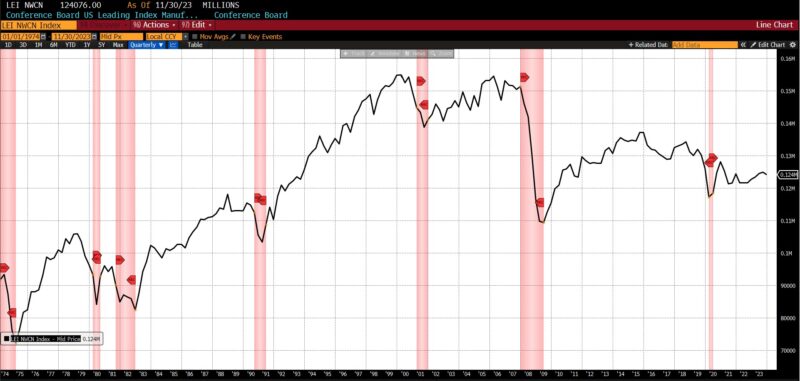
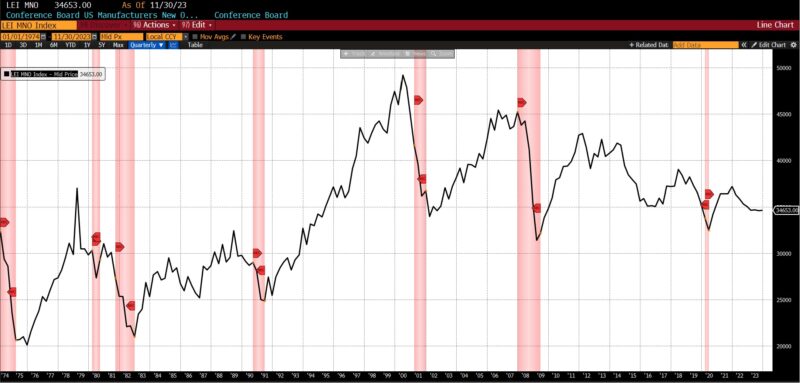
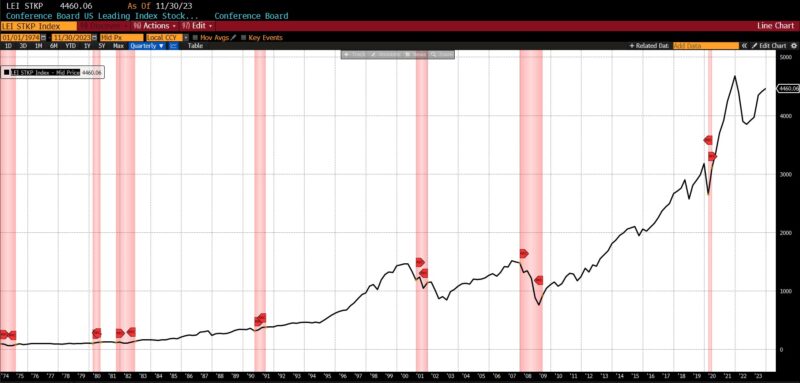
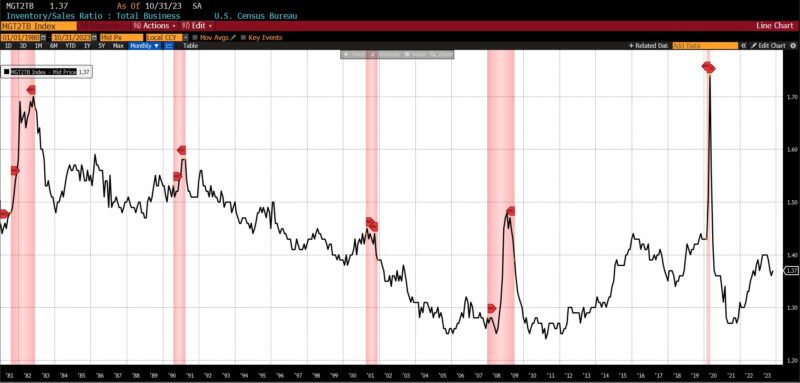
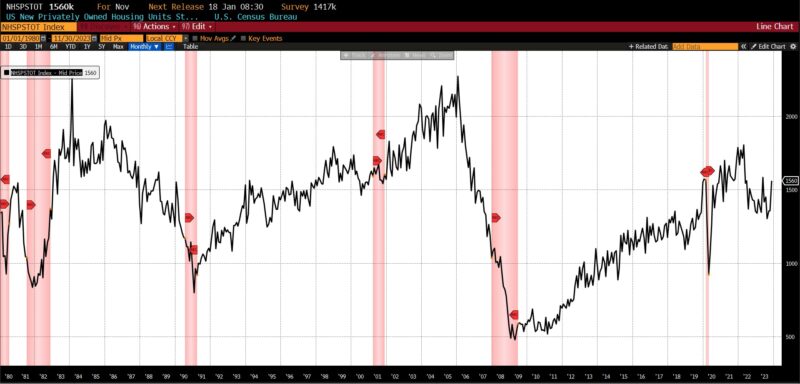
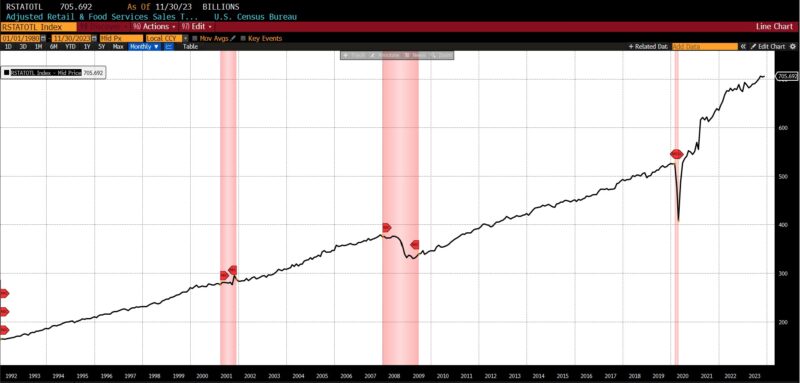
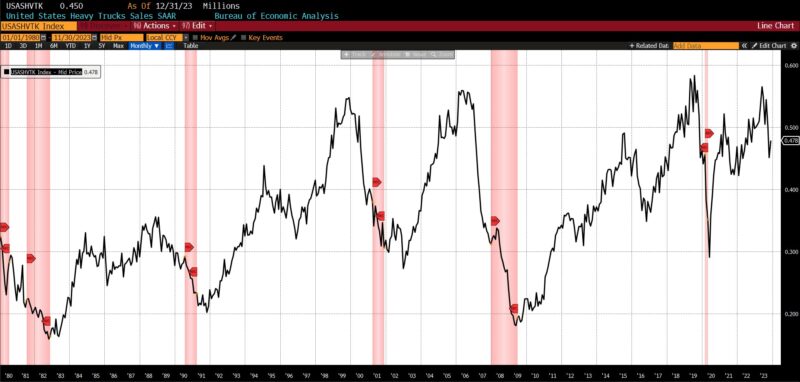
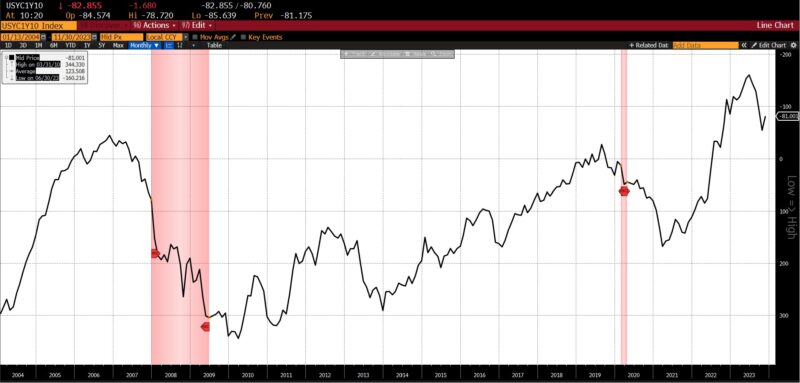
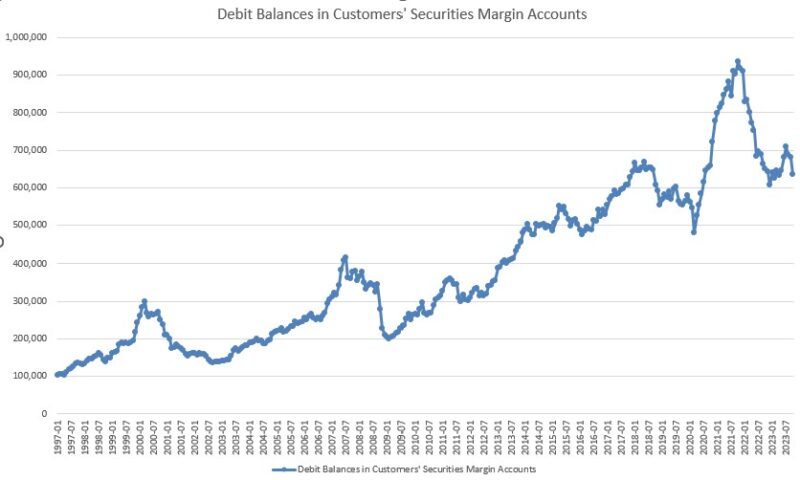
ROUGHLY COINCIDENT INDICATORS
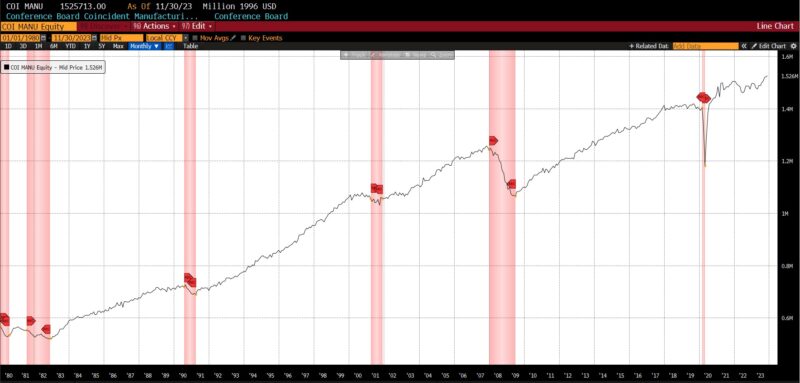
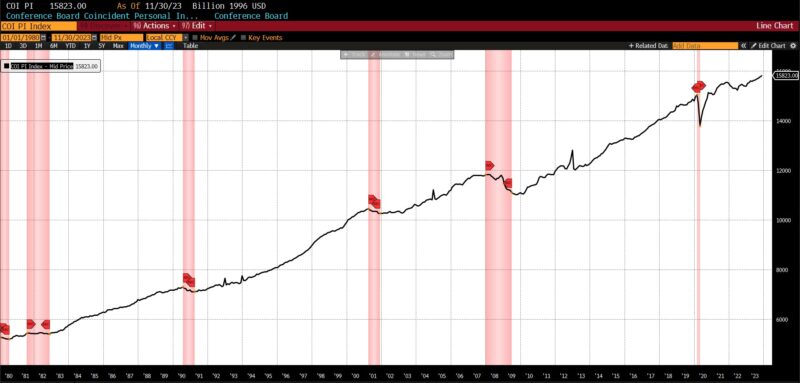
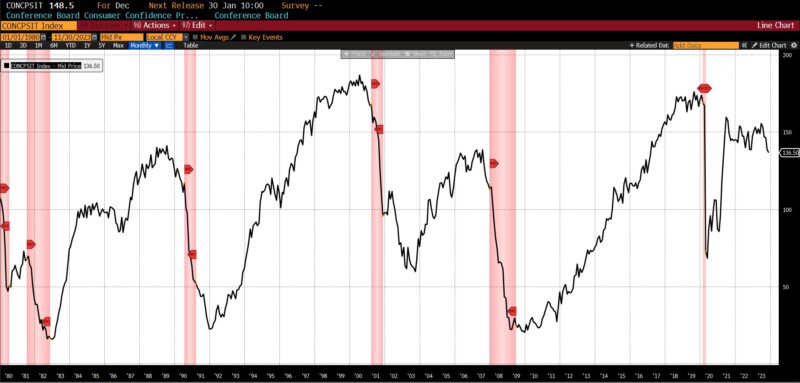
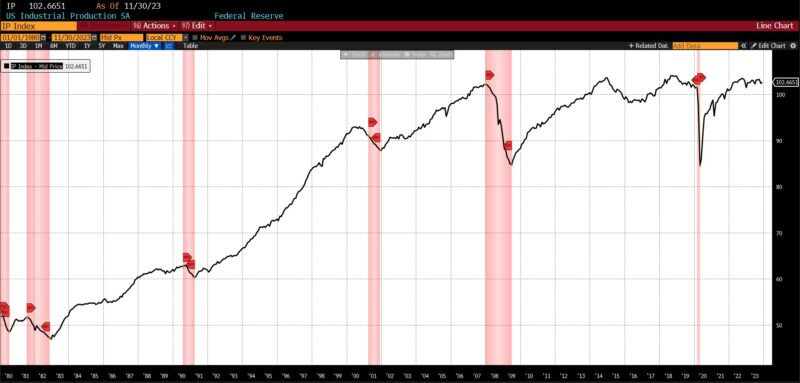
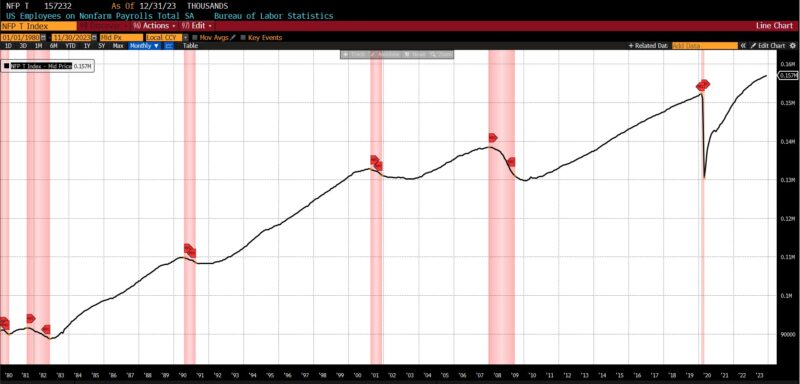
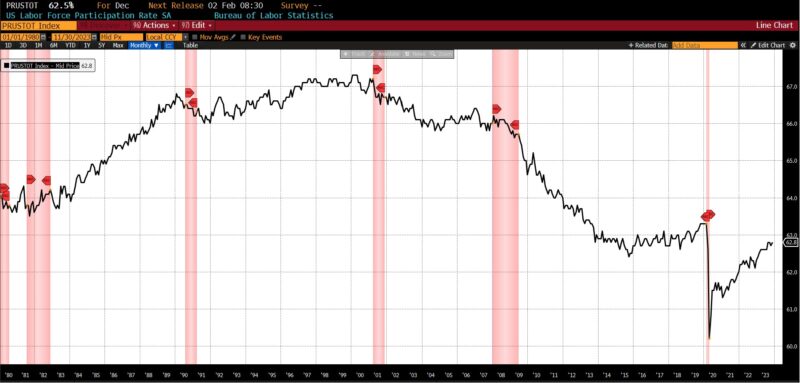
LAGGING INDICATORS
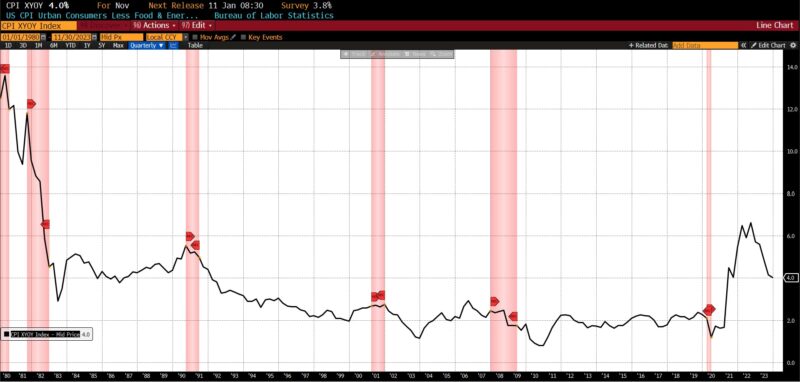
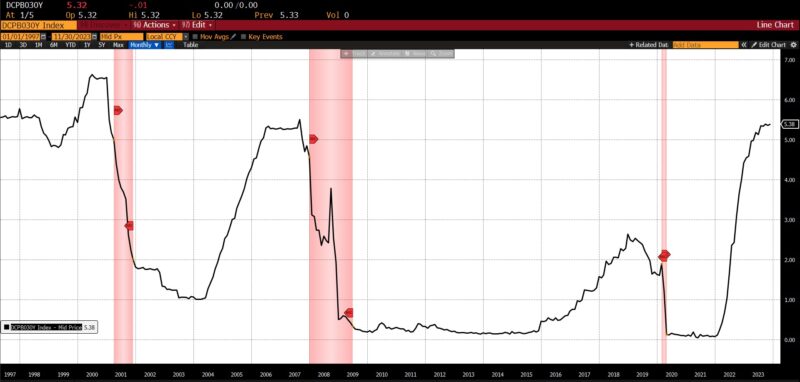
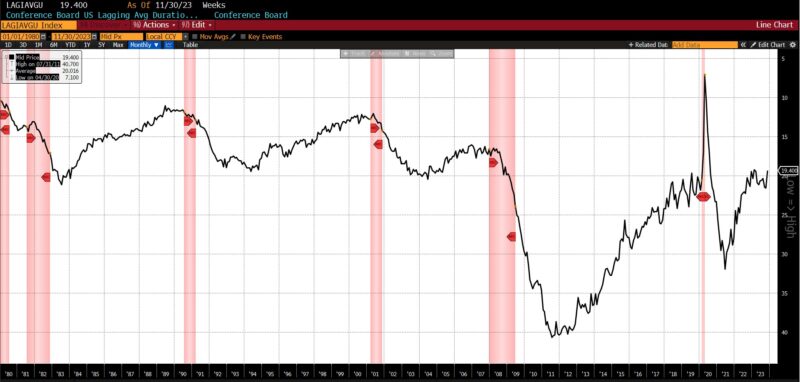
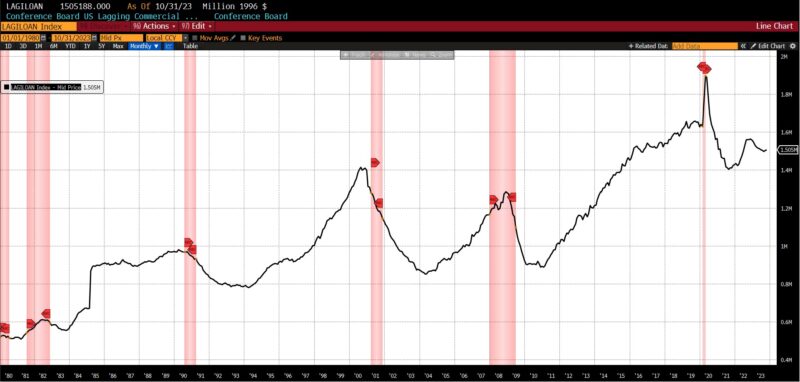
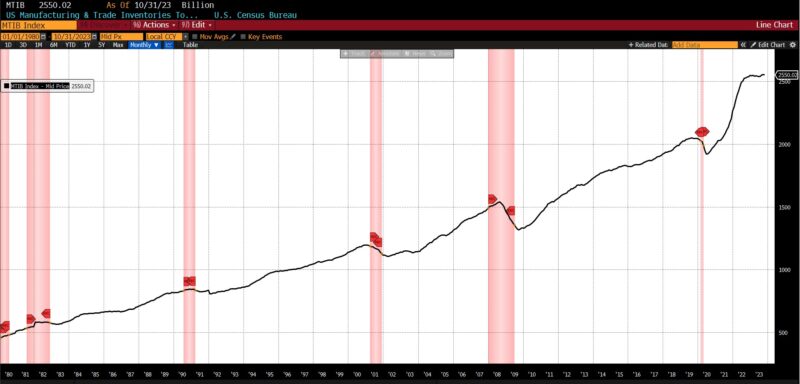
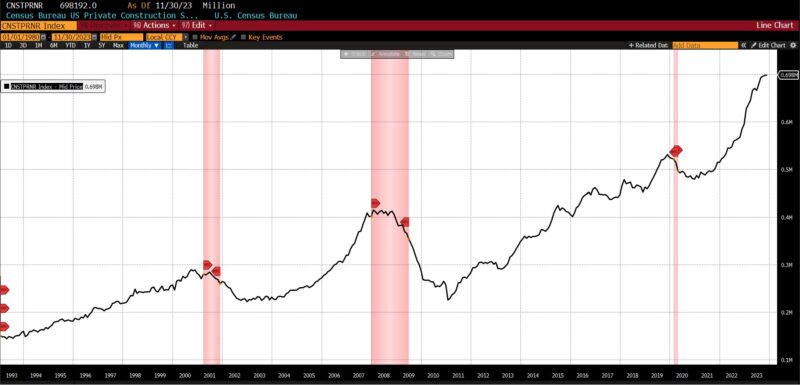
CAPITAL MARKET PERFORMANCE
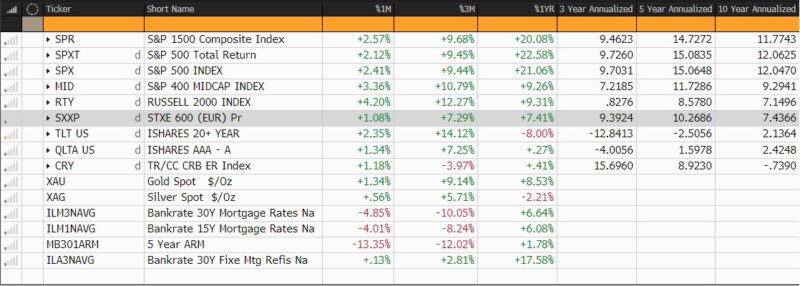
All charts and data sourced from Bloomberg Finance, LP
